Flumes channel water over fill and onto more stable ground. They can also be used to direct water into sediment controls, like sediment traps or slash.
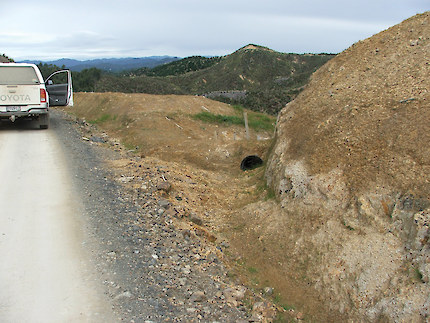
- The flume has a well-constructed inlet
- The inlet is at least twice the pipe diameter
- Water will not bypass the entrance

- The flume entranceway was bypassed when the fill eroded around it during a storm
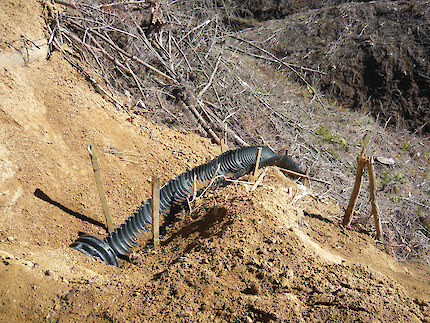
- The flume has good fall to reduce silting within it
- The flume follows the ground shape
- The flume exit has slash to armour the outlet and help stop erosion
- The flume is firmly secured with pegs
- Flumes with internal ribs help slow the speed of water
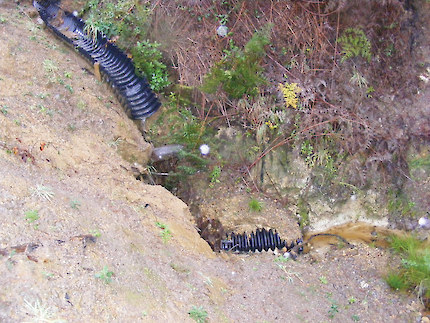
- The flume outlet has failed
- The outlet was not armoured, and erosion has led to the undermined pipe
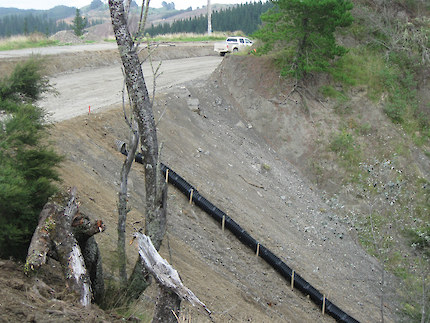
- The flume sits on the ground so the water’s weight is supported
- The flume is firmly fixed with pegs
- The water runs onto more stable ground

- No fluming caused the fill slope to fail
- The fill will continue to erode and sediment will enter the nearby stream
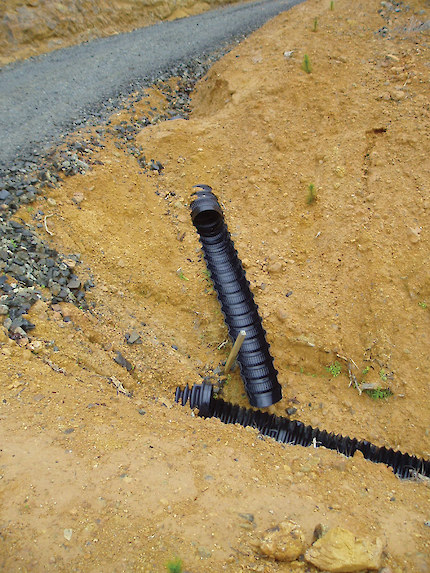
- Both flumes have too few pegs
- The top flume inlet is likely to be bypassed in a storm
- The bottom flume is expected to fill with debris, because the slope above it has loose material that can spill into it

- Corrugated iron should not be used
- Flumes that do not follow the ground often fail
- Corrugated plastic flumes are better. They slow the water’s speed, and joints seal between flume sections. These are less likely to move once secured
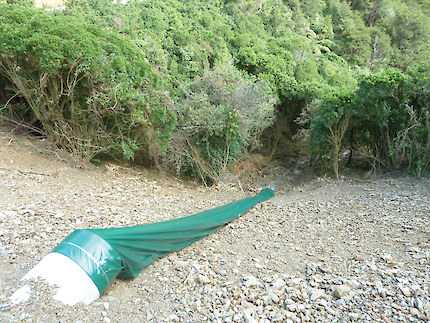
- Culvert sock flumes are an option to direct water over long and unstable fill
- The sock is well pegged
- Inspect socks regularly, as they are prone to blocking
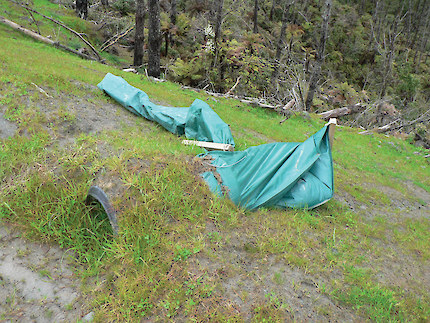
- Poorly pegged and maintained socks are prone to rolling and moving in wind gusts
- Once blocked they often fail
- Consider using flexible full round corrugated pipes for very windy conditions
- May be better than half pipes or socks